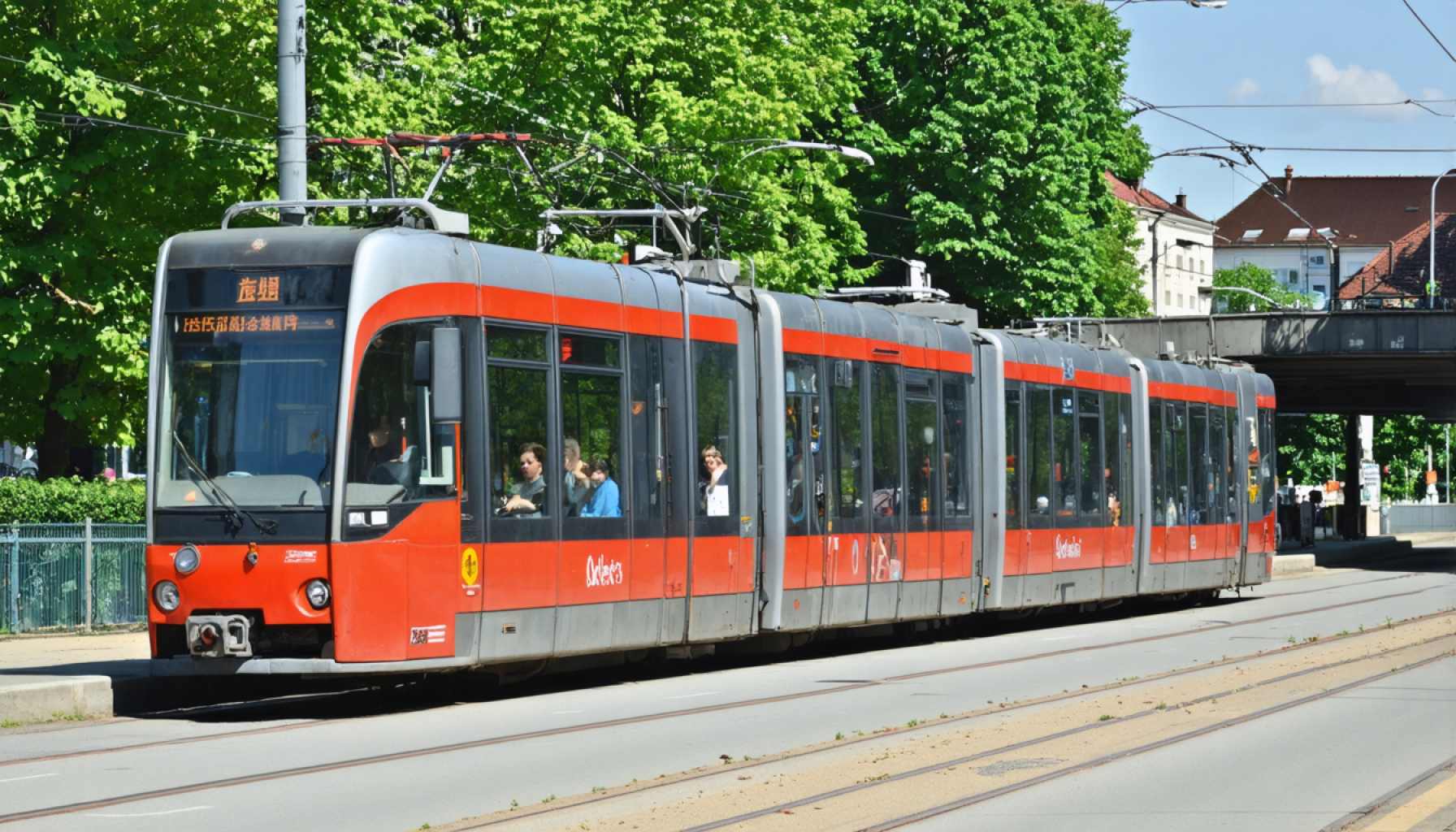- Rosenheim’s revitalized public transport system enhances convenience and accessibility for residents, like Gertraud Frankenberger, with improved timetables and more frequent stops.
- The once unreliable service is now more efficient, with commendations from Mayor Andreas März and civic leaders validating its improvements.
- Economic adjustments, such as reduced service frequencies, balance financial sustainability with public demand, though some dissatisfaction persists.
- Technological upgrades, including QR codes, WhatsApp communication, and a “Swipe and Ride” feature, streamline and modernize user experiences.
- Despite improvements, community feedback highlights ongoing challenges, such as sparse schedules and over-reliance on supplementary transport options, which are addressed hopefully by future enhancements.
A crisp morning in Rosenheim whispers promises of change. The city’s rejuvenated public transport system breathes new life into its streets, inviting optimism among passengers like Gertraud Frankenberger. Relieved from her car’s clutches, she finds solace in the new timetable that places a bus stop mere steps from her doorstep. The newfound convenience fuels her social life and errands, exchanging parking hunt frustrations for seamless rides into the city center.
Once marred by frequent delays and spartan schedules, especially during holidays, Rosenheim’s public transportation now savors a renaissance. The scene unfolds with Oberbürgermeister Andreas März and other civic leaders embarking on a personal journey among the city’s commuters, proving the system’s newfound efficiency firsthand.
Passengers traverse the cityscape, greeted by friendly drivers and an almost clockwork schedule. However, room for growth remains evident as passengers squint at minuscule screen fonts and juggle ticket nuances. Recent changes ensure economic viability, albeit by trimming service frequencies—a necessity not devoid of public grumbles.
Digital strides, such as QR codes at stops and a WhatsApp communication channel, alleviate past frustrations. The “Swipe and Ride” feature impresses, promising smarter fare interpretations and simplifying payments into a pocket-friendly ballet of swipes.
Amid these advancements, echoes of dissent vibrate through social media threads, as users bemoan sparse schedules and dependency on supplementary vehicles. Yet, Mayor März remains optimistic, his face alight with satisfaction as he underscores public transit’s dual nature: an essential service with a cost.
As Rosenheim embraces its public transport overhaul, community members savor shorter wait times and a seamless commute. The journey towards an efficient, user-friendly network reveals its first blooms—a promising start underscored by a delicate balance between accessibility and economic prudence.
Transform Your Commute: Unveiling the Secrets Behind Rosenheim’s Public Transport Miracle
How-To Steps & Life Hacks
If you’re navigating Rosenheim’s enhanced public transport system, here are some practical how-to steps and life hacks to make the most of it:
1. Leverage the “Swipe and Ride” Feature: Use the app to streamline fare payments with a simple swipe, reducing transaction time at every stop.
2. WhatsApp for Updates: Add the official transportation number on WhatsApp to receive real-time updates about delays or changes in schedules directly on your smartphone.
3. Maximize QR Code Use: At bus stops, scan the QR codes for instant information on arrival times, facilitating precise planning of your trips.
4. Utilize Peak Time Off-Peak Strategy: Travel during early mornings or late evenings to avoid congestion and experience smoother rides.
Real-World Use Cases
Rosenheim’s public transport revamp presents several real-world applications:
– Efficient Daily Commutes: Residents like Gertraud Frankenberger experience freedom from parking stress, utilizing quick rides for errands and social engagements.
– Improved Tourism: Visitors can explore the city more conveniently, as transport reliability increases without the complexity of rental cars.
– Environmental Impact: With lesser dependency on personal vehicles, the city sees reduced emissions, aligning with global sustainability goals.
Market Forecasts & Industry Trends
Public transport systems globally are evolving with trends indicating:
– Increase in Digital Integration: The use of apps, digital ticketing, and real-time communication channels is expected to grow.
– Sustainability Focus: Future public transport models will prioritize eco-friendly operations, aiming to decrease carbon footprints.
– Dynamic Scheduling: Adaptive schedules based on AI analysis could soon become the norm, enhancing service efficiency.
Reviews & Comparisons
User feedback shows satisfaction with Rosenheim’s transport enhancements, yet compares it against nearby cities:
– Munich vs. Rosenheim: While Munich offers higher frequency services, Rosenheim’s streamlined digital tools often ease user experience, compensating for lower frequency.
Controversies & Limitations
Despite the strides, certain challenges persist:
– Service Frequency Cuts: Some residents express concerns over less frequent bus schedules affecting convenience.
– Dependency Issues: The system might still require supplementary transport options like taxis during off-hours.
Features, Specs & Pricing
Key features of Rosenheim’s system include:
– User-Friendly Apps: For ticketing and real-time updates.
– Affordable Pricing Models: Designed to be cost-effective while ensuring sustainability.
Security & Sustainability
The security infrastructure includes surveillance at critical points, while sustainability is prioritized through energy-efficient buses, reflecting benefits like reduced pollution.
Insights & Predictions
Future developments could include:
– Enhanced Screen Interfaces: Addressing issues with hard-to-read bus stop screens.
– Increased Frequency During Peak Hours: To better meet rider demand.
Pros & Cons Overview
Pros:
– Convenience and reduced travel times.
– Real-time communication tools.
– Sustainable, eco-friendly travel option.
Cons:
– Reduced service frequency.
– Limited offline support for non-tech savvy users.
Actionable Recommendations
1. Stay Informed: Regularly check updates on the app to avoid unexpected delays.
2. Plan Ahead: Schedule your trips around known peak times to maximize efficiency.
3. Engage with Feedback Channels: Contribute to the system’s evolution by providing your feedback through available channels like social media or user surveys.
For more insights into public transportation developments, visit Rosenheim. Embrace these changes and enhance your daily commute with newfound ease, optimizing both time and convenience.
